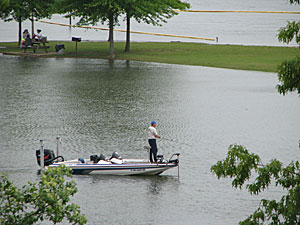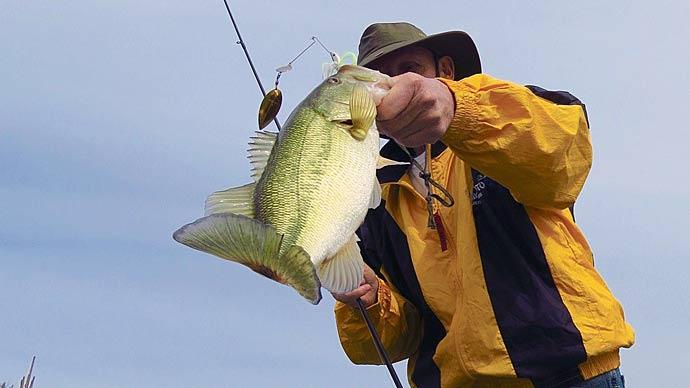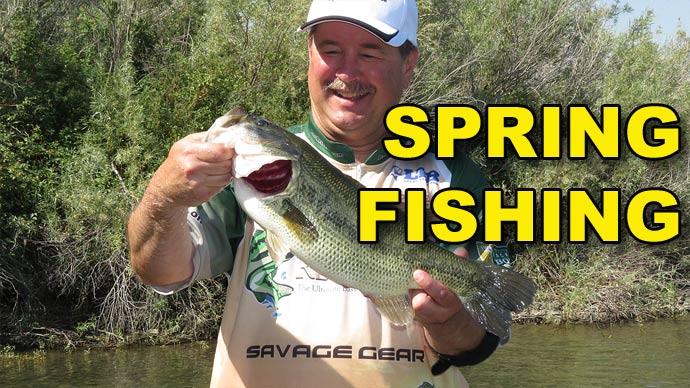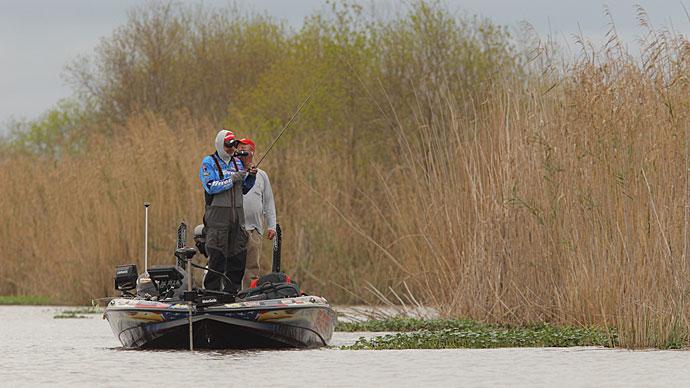
I love fishing this time of year. You can fish with just about any method you prefer, and finding active fish isn’t a big problem. However, catching quality bass consistently can be a challenge.
The beauty of spring is that you can find fish in the pre-spawn, spawn, and post-spawn modes simultaneously over the next couple of months. Most bass are shallow and aggressive. Just pick the technique you like to fish and get after them.
The problem is that there are a lot of small fish in the mix, and you can be lured into complacency or be reluctant to change. Who wants to give up on a pattern if it’s producing fish? Well, I do, especially if I know I can make an adjustment and catch bigger bass. Sometimes, the adjustment is minor, yet it can make all the difference in the world.
For example, say you’re catching a lot of bass on a floating worm in the shoreline bushes, but the fish are small. By pulling off the bank and fishing those larger stumps in slightly deeper water, you may find the bigger fish – maybe not as many, but bigger. Or maybe you move to secondary points and catch good ones on a crankbait or go into the very backs of pockets and hammer chunky females on a spinnerbait or soft-plastic jerkbait.
You have to be flexible and willing to move around. Once you find the quality bass pattern, you’ve hit the jackpot.
But that’s not the only problem anglers face this time of year. Conditions can change hourly, and you’ve got to change with them. A lot of anglers don’t.
That doesn’t mean the fish always move from a spot, but they will reposition on the cover near where they were holding. Let me explain. Cool nights drop shallow-water temperatures, but they warm quickly as the sun gets higher and the air gets warmer. The water may be in the high 50s during the morning but can rise 10 degrees by afternoon. When this happens, the bass come off the bottom and suspend just beneath the surface to take advantage of the warmer water.
I’ve seen times when I could catch bass on a jig in shallow bushes in the morning but not get a bite in the afternoon. The morning fish were nestled in the bottom where the water was warmer, but as the sun warmed the water, they moved off the bottom and suspended near the surface.
You’ll notice this immediately if you see big swirls next to the bush you’re fishing before your bait gets in the strike zone. It’s an occurrence I’ve seen everywhere I’ve fished during spring. Some anglers think the lure is spooking them, but it’s the line coming through the water and raking across their backs that freaks them out.
Of course, if you’re wearing quality polarized sunglasses and look closely, you can probably see these bass holding just beneath the surface. Those fish can still be caught, but you must change your presentation and be a little sneakier.
First, choose a lure that stays in the upper part of the water column, like a smaller spinnerbait, jerkbait, floating worm, or something that doesn’t sink fast. If the bass are on a jig bite, downsize the jig and swim it through the top 10 inches of water.
Secondly, use a longer rod and hold your rod tip high to keep the line out of the water as much as possible. This is when mono works better than fluorocarbon line because it doesn’t sink as fast and stays near the surface,
Remember, if you’re catching small bass this spring, look nearby for bigger fish. And if you’re spooking fish, downsize your bait and keep your line out of the water. You’ll catch more fish throughout the day and bigger ones, too.
You can find more articles, quick tips, and more at HankParker.com.




